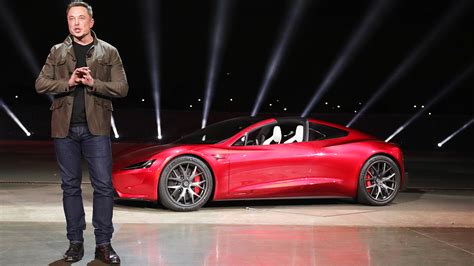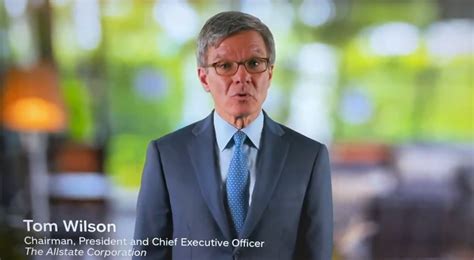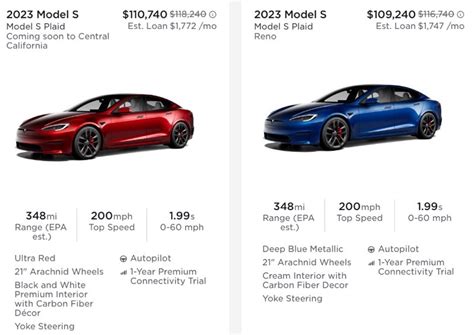
Tesla, under Elon Musk’s leadership, is navigating a pivotal phase marked by slowing electric vehicle (EV) demand, intensifying competition, and strategic pivots towards artificial intelligence, robotics, and energy solutions, prompting Wall Street to reassess the company’s future trajectory beyond automotive dominance.
Elon Musk’s vision for Tesla extends far beyond electric vehicles, a realization that’s becoming increasingly apparent as the company grapples with shifting market dynamics. While Tesla remains a dominant force in the EV sector, analysts are closely watching Musk’s moves in artificial intelligence (AI), robotics, and energy, questioning whether these ventures can offset potential deceleration in EV sales and maintain the company’s high-growth narrative.
Navigating EV Market Headwinds
The EV market, once characterized by explosive growth, is showing signs of maturity. Demand is softening, and competition is intensifying as established automakers and new entrants alike launch their own electric models. This environment presents challenges for Tesla, which has historically enjoyed a first-mover advantage.
“Tesla remains the leader in EVs, and we think it can maintain that leadership position for the foreseeable future,” says Seth Goldstein, an analyst at Morningstar. However, he cautions that Tesla’s growth rate may slow as the overall EV market matures. “We think the EV market is going to continue to grow, but it’s not going to grow at the same rate it has in the past.”
Tesla’s recent price cuts, aimed at stimulating demand, have further compressed margins and raised concerns about profitability. This strategy, while effective in boosting sales volume, has also signaled a shift in the competitive landscape, forcing Tesla to prioritize market share over immediate profit maximization. The company faces pressure to innovate and differentiate its products to maintain its competitive edge.
The AI and Robotics Push: A New Frontier?
Musk’s ambitious vision for Tesla extends beyond sustainable transportation. He envisions the company as a leader in artificial intelligence and robotics, developing advanced technologies with applications across various industries. This strategic pivot is driven by the belief that AI and robotics will be crucial for Tesla’s long-term growth and success.
A key element of this strategy is the development of Optimus, Tesla’s humanoid robot. Musk believes that Optimus has the potential to revolutionize the workforce, automating repetitive and dangerous tasks. While the project is still in its early stages, Musk is optimistic about its long-term prospects.
“I think Optimus will be more valuable than everything else combined,” Musk stated during a Tesla earnings call, highlighting the potential for the robot to generate significant revenue and transform the company’s business model.
Tesla’s autonomous driving technology is also a crucial component of its AI strategy. The company is investing heavily in developing full self-driving capabilities, which could revolutionize transportation and logistics. However, achieving full autonomy has proven to be a complex and challenging endeavor, with regulatory hurdles and technological limitations still to overcome.
Energy Solutions: Powering the Future
Tesla’s energy division, which includes solar panels, energy storage systems (like the Powerwall and Megapack), and energy management software, is another key area of focus. Musk believes that Tesla can play a significant role in the transition to a sustainable energy future.
Tesla’s energy storage products are gaining traction as homeowners and businesses seek to reduce their reliance on the grid and lower their energy costs. The company’s Megapack, a large-scale energy storage system, is being deployed in utility-scale projects around the world, helping to stabilize the grid and integrate renewable energy sources.
“Tesla’s energy business is a significant growth opportunity,” says Jeffrey Osborne, an analyst at TD Cowen. “We think that the energy storage market is going to continue to grow rapidly, and Tesla is well-positioned to capitalize on that growth.”
Wall Street’s Perspective: A Reassessment of Value
Tesla’s strategic shift towards AI, robotics, and energy is prompting Wall Street to reassess the company’s valuation. Some analysts believe that Tesla’s stock is overvalued, given the challenges in the EV market and the uncertainty surrounding its new ventures. Others argue that Tesla’s long-term potential remains significant, particularly if it can successfully execute its AI and robotics strategy.
“We think that Tesla’s stock is fairly valued,” says Adam Jonas, an analyst at Morgan Stanley. “We think that the company has a lot of potential, but there are also a lot of risks.”
The debate over Tesla’s valuation reflects the uncertainty surrounding its future. While the company has a proven track record of innovation and disruption, its ability to maintain its high-growth trajectory in the face of intensifying competition and evolving market dynamics remains to be seen.
The Cybertruck Factor
The long-awaited Cybertruck, Tesla’s futuristic electric pickup truck, adds another layer of complexity to the company’s narrative. The Cybertruck’s unconventional design and advanced features have generated significant buzz, but its production has been plagued by delays and challenges.
“The Cybertruck is a key product for Tesla,” says Dan Ives, an analyst at Wedbush Securities. “It’s a game-changer in the pickup truck market, and it could significantly boost Tesla’s sales.”
However, the Cybertruck’s high price tag and limited availability may limit its appeal to a niche market. Moreover, the truck’s polarizing design could alienate some potential buyers. Whether the Cybertruck will be a commercial success or a niche product remains to be seen.
Elon Musk’s Influence: A Double-Edged Sword
Elon Musk’s leadership is both a strength and a potential weakness for Tesla. His visionary thinking and relentless pursuit of innovation have been instrumental in Tesla’s success. However, his controversial statements and unpredictable behavior have also created challenges for the company.
Musk’s acquisition of Twitter (now X) has raised concerns about his focus and potential conflicts of interest. Some investors worry that Musk’s attention is being diverted from Tesla, and that his involvement in Twitter could negatively impact Tesla’s brand and reputation.
“Elon Musk is a brilliant entrepreneur, but he can also be a liability,” says Gene Munster, an analyst at Deepwater Asset Management. “His involvement in Twitter is a distraction, and it could hurt Tesla in the long run.”
Despite these concerns, Musk remains a key asset for Tesla. His vision, drive, and ability to attract talent are essential for the company’s continued success. However, Tesla’s board of directors needs to ensure that Musk’s activities outside of Tesla do not jeopardize the company’s future.
The Road Ahead: Challenges and Opportunities
Tesla faces a complex and uncertain future. The company must navigate slowing EV demand, intensifying competition, and the challenges of scaling its AI, robotics, and energy businesses. At the same time, Tesla has significant opportunities to capitalize on its strengths in technology, innovation, and brand recognition.
To succeed, Tesla must continue to innovate and differentiate its products, manage its costs effectively, and navigate the evolving regulatory landscape. The company must also address concerns about Elon Musk’s leadership and ensure that his activities outside of Tesla do not detract from the company’s focus and performance.
Tesla’s future is not guaranteed, but the company has the potential to remain a dominant force in the automotive, energy, and technology industries. Whether it can achieve this potential will depend on its ability to execute its strategy effectively and adapt to the changing market environment. The next few years will be critical for Tesla as it seeks to solidify its position and realize its long-term vision.
Frequently Asked Questions (FAQ)
1. Is Tesla’s EV demand slowing down?
Yes, the broader EV market is showing signs of maturation, which affects Tesla. While still a leader, Tesla’s growth rate may slow as the overall EV market matures, and competition intensifies. The article mentions that “Tesla remains the leader in EVs, and we think it can maintain that leadership position for the foreseeable future,” according to Seth Goldstein, an analyst at Morningstar, but cautions that the growth rate may not be as high as in the past.
2. What are Tesla’s plans beyond electric vehicles?
Tesla is focusing on artificial intelligence (AI), robotics (particularly with Optimus), and energy solutions. Elon Musk believes Optimus could “be more valuable than everything else combined.” Tesla is also investing in autonomous driving technology and expanding its energy division with products like solar panels, Powerwall, and Megapack.
3. How is Wall Street viewing Tesla’s future?
Wall Street’s view is mixed. Some analysts believe Tesla’s stock is overvalued due to challenges in the EV market and uncertainties surrounding new ventures. Others see significant long-term potential, especially if Tesla successfully executes its AI and robotics strategy. Adam Jonas from Morgan Stanley notes that Tesla has a lot of potential but also faces risks.
4. What is the Cybertruck’s role in Tesla’s future?
The Cybertruck is considered a key product that could significantly boost Tesla’s sales, according to Dan Ives from Wedbush Securities. However, its high price, limited availability, and polarizing design may restrict its appeal to a niche market. Production delays have also added to the uncertainty.
5. How is Elon Musk’s involvement with Twitter impacting Tesla?
Elon Musk’s acquisition of Twitter (now X) has raised concerns among investors about his focus and potential conflicts of interest. Some worry that his attention is being diverted from Tesla, and his involvement in Twitter could negatively impact Tesla’s brand and reputation. Gene Munster from Deepwater Asset Management views Musk’s Twitter involvement as a distraction that could hurt Tesla in the long run.
In-Depth Analysis and Expanded Context
Tesla’s journey from a niche electric car manufacturer to a global automotive and technology giant has been nothing short of remarkable. Under the visionary leadership of Elon Musk, the company has disrupted the traditional automotive industry, accelerated the adoption of electric vehicles, and pushed the boundaries of innovation in areas such as battery technology, autonomous driving, and artificial intelligence. However, Tesla’s future is not without its challenges. As the EV market matures and competition intensifies, the company must navigate a complex landscape of economic headwinds, technological disruptions, and evolving consumer preferences.
The EV Market: From Hypergrowth to Sustainable Expansion
The electric vehicle market has experienced explosive growth in recent years, driven by factors such as increasing environmental awareness, government incentives, and advancements in battery technology. However, the pace of growth is expected to moderate in the coming years as the market matures and reaches a broader range of consumers. This shift presents both challenges and opportunities for Tesla.
On the one hand, Tesla faces increased competition from established automakers and new entrants who are launching their own electric models. These competitors are leveraging their existing manufacturing infrastructure, distribution networks, and brand recognition to gain market share. This means Tesla must work harder to maintain its competitive edge and differentiate its products.
On the other hand, the growing EV market also presents significant opportunities for Tesla. As more consumers embrace electric vehicles, Tesla can expand its customer base and increase its sales volume. The company can also leverage its technological leadership and brand reputation to attract new customers and maintain its market share.
The AI and Robotics Opportunity: A Transformative Vision
Elon Musk’s vision for Tesla extends far beyond electric vehicles. He sees the company as a leader in artificial intelligence and robotics, developing advanced technologies with applications across various industries. This strategic pivot is driven by the belief that AI and robotics will be crucial for Tesla’s long-term growth and success.
Tesla’s efforts in AI are primarily focused on developing autonomous driving technology. The company is investing heavily in machine learning, computer vision, and sensor technology to enable its vehicles to navigate complex environments without human intervention. Achieving full autonomy has proven to be a complex and challenging endeavor, but Tesla remains committed to this goal.
In addition to autonomous driving, Tesla is also developing humanoid robots. The Optimus robot is designed to perform repetitive and dangerous tasks in factories, warehouses, and other environments. Musk believes that Optimus has the potential to revolutionize the workforce and generate significant revenue for Tesla.
The AI and robotics opportunity represents a transformative vision for Tesla. If the company can successfully develop and commercialize these technologies, it could become a major player in a wide range of industries beyond automotive.
Energy Solutions: Building a Sustainable Future
Tesla’s energy division is another key area of focus. The company is committed to building a sustainable energy future by providing solar panels, energy storage systems, and energy management software.
Tesla’s solar panels are designed to generate clean electricity for homes and businesses. The company’s energy storage systems, such as the Powerwall and Megapack, allow customers to store excess solar energy and use it when they need it. Tesla’s energy management software helps customers optimize their energy consumption and reduce their reliance on the grid.
The energy solutions market is growing rapidly as homeowners and businesses seek to reduce their carbon footprint and lower their energy costs. Tesla is well-positioned to capitalize on this growth, given its technological leadership, brand reputation, and established customer base.
The Cybertruck: A Bold Bet on the Future
The Cybertruck is Tesla’s futuristic electric pickup truck. Its unconventional design and advanced features have generated significant buzz, but its production has been plagued by delays and challenges.
The Cybertruck represents a bold bet on the future. Its stainless steel exoskeleton, advanced battery technology, and unique design are unlike anything else on the market. However, its high price tag and limited availability may limit its appeal to a niche market.
Whether the Cybertruck will be a commercial success or a niche product remains to be seen. But one thing is certain: it has captured the attention of the world and generated significant excitement about Tesla’s future.
Elon Musk’s Influence: A Double-Edged Sword in Detail
Elon Musk’s leadership is arguably Tesla’s greatest asset. His visionary thinking, relentless pursuit of innovation, and ability to inspire others have been instrumental in Tesla’s success. However, his controversial statements and unpredictable behavior have also created challenges for the company.
Musk’s acquisition of Twitter has raised concerns about his focus and potential conflicts of interest. Some investors worry that his attention is being diverted from Tesla, and that his involvement in Twitter could negatively impact Tesla’s brand and reputation. The concern is that Musk’s time and resources are being stretched thin, potentially impacting Tesla’s performance. The argument centers on the belief that leading multiple large, complex companies simultaneously may dilute his effectiveness at any single one.
Moreover, Musk’s sometimes erratic behavior on Twitter has raised concerns about the company’s image. His tweets have been known to cause controversy and even impact Tesla’s stock price. This unpredictability can make it difficult for investors to assess the company’s risk profile.
Despite these concerns, Musk remains a key asset for Tesla. His vision, drive, and ability to attract talent are essential for the company’s continued success. Tesla’s board of directors needs to carefully manage Musk’s activities outside of Tesla to ensure they do not jeopardize the company’s future. Striking a balance between harnessing Musk’s entrepreneurial spirit and mitigating potential risks associated with his public persona is a critical challenge for Tesla’s leadership.
Navigating Regulatory and Political Landscapes
Tesla operates in a heavily regulated industry, and its success depends in part on its ability to navigate the complex regulatory and political landscapes. Government regulations impact various aspects of Tesla’s business, including vehicle safety, emissions standards, and autonomous driving technology.
Tesla must also navigate the political landscape, as government policies can significantly impact the EV market. Government incentives, such as tax credits and subsidies, can encourage consumers to purchase electric vehicles. Conversely, policies that favor traditional automakers or restrict the use of autonomous driving technology could negatively impact Tesla.
Tesla’s ability to engage effectively with policymakers and advocate for its interests will be crucial for its continued success. This includes lobbying efforts, public relations campaigns, and partnerships with government agencies.
The Competitive Landscape: A Shifting Battlefield
The electric vehicle market is becoming increasingly competitive as established automakers and new entrants launch their own electric models. This competition is forcing Tesla to innovate and differentiate its products to maintain its competitive edge.
Traditional automakers, such as General Motors, Ford, and Volkswagen, are investing heavily in electric vehicles. These companies have the advantage of existing manufacturing infrastructure, distribution networks, and brand recognition. However, they also face the challenge of transitioning from traditional gasoline-powered vehicles to electric vehicles.
New entrants, such as Rivian, Lucid, and Nio, are also vying for market share. These companies are focused exclusively on electric vehicles and are often more agile and innovative than traditional automakers. However, they lack the established infrastructure and brand recognition of traditional automakers.
Tesla’s competitive advantage lies in its technological leadership, brand reputation, and established customer base. However, the company must continue to innovate and differentiate its products to maintain its edge in the face of intensifying competition.
Tesla’s Long-Term Outlook: A Vision of Sustainable Growth
Tesla’s long-term outlook is dependent on its ability to navigate the challenges and capitalize on the opportunities outlined above. The company must continue to innovate and differentiate its products, manage its costs effectively, and navigate the evolving regulatory and political landscapes.
If Tesla can successfully execute its strategy, it has the potential to remain a dominant force in the automotive, energy, and technology industries. The company’s vision of a sustainable future, powered by electric vehicles, renewable energy, and artificial intelligence, resonates with a growing number of consumers and investors.
However, Tesla’s success is not guaranteed. The company faces significant challenges, and its ability to overcome these challenges will determine its long-term future. The next few years will be critical for Tesla as it seeks to solidify its position and realize its long-term vision.
Financial Performance and Future Projections
Analyzing Tesla’s financial performance is crucial for understanding its current standing and future prospects. Key metrics include revenue growth, profitability, cash flow, and capital expenditures. While Tesla has demonstrated impressive revenue growth in recent years, profitability has been more volatile, influenced by factors such as pricing strategies, production costs, and investments in new technologies.
Future financial projections for Tesla are subject to considerable uncertainty, depending on various factors such as the rate of EV adoption, the success of new product launches (like the Cybertruck), and the company’s ability to scale its AI and energy businesses. Analysts’ estimates vary widely, reflecting the differing assumptions and perspectives on Tesla’s future. Some foresee continued high growth and increasing profitability, while others are more cautious, citing concerns about competition and execution risks.
Technological Advancements and Innovation
Tesla’s commitment to technological advancements and innovation is central to its long-term success. Key areas of focus include battery technology, autonomous driving, artificial intelligence, and manufacturing processes.
Battery technology is critical for improving the performance, range, and cost of electric vehicles. Tesla is constantly working to develop more energy-dense, longer-lasting, and cheaper batteries. Advances in battery technology could significantly enhance the competitiveness of Tesla’s vehicles and accelerate the adoption of electric vehicles.
Autonomous driving technology has the potential to revolutionize transportation and logistics. Tesla is investing heavily in developing full self-driving capabilities, which could enable its vehicles to operate without human intervention. Achieving full autonomy would require significant technological breakthroughs and regulatory approvals.
Artificial intelligence is playing an increasingly important role in Tesla’s products and services, from autonomous driving to energy management. Tesla is leveraging AI to improve the performance, efficiency, and safety of its vehicles and energy systems.
Manufacturing processes are also a key area of focus for Tesla. The company is constantly seeking to improve its manufacturing efficiency and reduce its production costs. Innovations in manufacturing, such as gigacasting and structural battery packs, could significantly improve Tesla’s profitability and competitiveness.
Supply Chain Management and Geopolitical Risks
Tesla’s supply chain is complex and global, encompassing a wide range of materials, components, and suppliers. Managing this supply chain effectively is critical for ensuring the timely and cost-effective production of Tesla’s vehicles and energy systems.
Tesla faces several supply chain challenges, including shortages of critical materials, disruptions due to geopolitical events, and increasing competition for resources. To mitigate these risks, Tesla is diversifying its supply base, investing in domestic production, and forging strategic partnerships with key suppliers.
Geopolitical risks also pose a significant challenge for Tesla. Trade tensions, political instability, and regulatory changes in various countries could disrupt Tesla’s supply chain and impact its sales. Tesla must carefully monitor these risks and adapt its strategies accordingly.
The Brand and Customer Loyalty
Tesla has cultivated a strong brand and a loyal customer base. The company’s brand is associated with innovation, sustainability, and high performance. Tesla’s customers are passionate about its products and services, and they often serve as brand ambassadors, promoting Tesla to their friends and family.
Maintaining and strengthening its brand and customer loyalty is critical for Tesla’s long-term success. The company must continue to deliver high-quality products and services, provide excellent customer support, and engage with its customers in a meaningful way.
Corporate Governance and Ethical Considerations
Corporate governance and ethical considerations are increasingly important for companies in today’s world. Investors, customers, and employees are demanding greater transparency, accountability, and ethical behavior from companies.
Tesla has faced scrutiny over its corporate governance practices, particularly regarding the role of Elon Musk and the composition of its board of directors. Concerns have been raised about the potential for conflicts of interest and the lack of independent oversight.
Tesla must address these concerns and strengthen its corporate governance practices to maintain the trust of its stakeholders. This includes increasing board diversity, enhancing transparency, and implementing robust ethical guidelines.
Conclusion: A Pivotal Moment for Tesla
Tesla stands at a pivotal moment in its history. The company faces significant challenges, but it also has tremendous opportunities. Its ability to navigate the complexities of the evolving automotive, energy, and technology landscapes will determine its long-term success. Whether it can maintain its innovative edge, manage its costs effectively, and address the concerns of its stakeholders will ultimately shape its future. The world is watching to see what Elon Musk and Tesla will do next.









